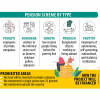Optimising Bangladesh's universal pension framework

Social protection for the elderly, in the form of the Old Age Allowance (OAA) programme, has been operational in Bangladesh since FY1998, offering monthly financial support to senior citizens from poor and vulnerable households. As of FY25, the programme has approximately 6 million elderlies as beneficiaries, each receiving Tk 600 per month distributed on a quarterly basis. Apart from this, retirement benefits for the government employees and their families can also be considered a social protection programme for senior citizens. However, following the identification of a lack OF support for over 70 percent of elderly individuals (aged 65 for male, and 62 for female) of Bangladesh, the National Social Security Strategy (NSSS) has introduced the Universal Pension Scheme (UPS), with an aim to establish a comprehensive pension system to ensure a minimum income for the country's senior citizens, especially from impoverished households.
The National Pension Authority (NPA) was established in 2023 to oversee the Universal Pension Scheme (UPS), which includes all citizens aged 18 to 50 (citizens over age 50, can also join under certain conditions); targeting employees/workers from private and informal sectors; workers with disabilities; and expatriates—to provide them with a monthly pension as a social safety net, whereas only government employees used to receive pension benefits earlier. The UPS was launched in August 2023 with four sub-schemes: Progoti, Surakkha, Samata, and Probash that cater to beneficiaries from different target groups with different eligibility criteria, premium costs, and pension benefits. These four schemes require monthly subscriptions ranging from Tk 500 to Tk 10,000 based on different criteria. Prattay, which is another scheme, had recently been scrapped following the protests of public university faculties within a month after getting launched for officers and employees of self-governed, autonomous, state-owned, and statutory organisations.
All the mentioned schemes require a minimum contribution period of 10 years and offer benefits starting at age 60, with payments continuing to nominees if the pensioner dies before 75 and their enrolment is voluntary. Against the target of covering 10 crore citizens under the UPS, around 3.5 lakh pensioners have registered in the first 10 and a half months, with a milestone of Tk 100 crore investment in treasury bonds as of July 3, 2024.
The introduction of the UPS in Bangladesh allows beneficiaries to enrol (voluntarily) for life-cycle benefits, using a mix of defined benefit (DB) and defined contribution (DC) plans. Apart from the explicit benefits to pensioners, the banks will benefit from the call money rate on premiums (0.01 percent) not withdrawn immediately. A portion of employers can also enjoy indirect advantages, i.e., the private companies that maintain a Contributory Provident Fund (CPF); as switching to the UPS scheme incurs no extra costs. This ensures employee welfare, offering a cost-effective alternative to managing their own funds.
Bangladesh can develop strategies similar to CalPERS' to mitigate investment risks by incorporating advanced risk management strategies such as regular stress testing, scenario analysis, actuarial assessments, and contingency planning. A balance between liquid and illiquid assets should be maintained to meet payout obligations without compromising on investment returns.
Nonetheless, institutional challenges such as public management systems, governance, accountability, transparency, public fund management; and beneficiary-related challenges such as the diversity of the population, perception of the beneficiaries, domination of the informal sector and the attitude of the private enterprises, etc. have raised concerns regarding the existing model of the UPS (Rajib, Mondal & Hassan, 2023). Furthermore, no actuarial analysis has been performed, while the benefit and contribution amounts are decided based on the NPA's assumptions about the country's socio-economic conditions. The stated issues highlight why Bangladesh should take lessons from some of the best global examples to strengthen the UPS to avoid the loopholes in the current models.
California Public Employees' Retirement System, or CalPERS, manages the largest public pension fund in the United States, with $462.8 billion in assets under management as of June 30, 2023, with a preliminary net return of 5.8 per cent on its investments and public equity with an estimated 14.1 per cent return in FY23. These assets comprise about 45 per cent of the total fund.
When it comes to pension fund management, CalPERS has robust governance frameworks to ensure accountability and transparency, while it engages with its members and stakeholders actively to ensure their interests are represented. Bangladesh should also develop clear and comprehensive regulations and policies through the NPA to govern pension funds and ensure transparency, accountability, and security. The NPA can implement programmes to enhance financial literacy, helping individuals make informed decisions about their retirement savings. In addition, the NPA can conduct regular audits and evaluations of the pension funds to ensure proper management and adherence to regulations.
CalPERS invests in a wide range of asset classes, including equities, real estate, private equity, and infrastructure (CAIA Association, 2016). Bangladesh can adopt a similar strategy to diversify its pension fund investments and manage volatility as alternative investment reduces risks and helps to ensure steady growth of pension funds, achieving higher returns over the long term.
Bangladesh can develop strategies similar to CalPERS' to mitigate investment risks by incorporating advanced risk management strategies such as regular stress testing, scenario analysis, actuarial assessments, and contingency planning. A balance between liquid and illiquid assets should be maintained to meet payout obligations without compromising on investment returns.
Additionally, Bangladesh can take lessons from Asian countries as well, specifically Vietnam and South Korea.
While sharing similar economic and environmental challenges with Bangladesh, Vietnam's pension system has been able to cover a wide range of beneficiaries especially from the formal sector. Vietnam's social insurance system requires contributions from both public and private sector employees, where employers contribute 14 percent against eight percent contribution of the salary by the employees (Dinh, et al., 2022). This ensures a steady inflow of funds into the pension system. Bangladesh can adopt a similar approach to broaden the coverage and ensure the financial sustainability of the UPS.
Lastly, Bangladesh can learn from the experiences of South Korea, which established a National Pension Research Institute in 1995 after its pension service was inaugurated in 1987. Collaboration with private financial institutions and pension fund managers to harness their expertise and resources and engaging with international organisations for technical assistance, training, and capacity building are some of the areas that Bangladesh can explore further through research.
Despite the various institutional challenges and ambiguity regarding the benefit and contribution amounts, Bangladesh can adopt lessons from some of the best global examples and strengthen its UPS to avoid the loopholes in the current models.
Samiha Chowdhury is a research associate at Research and Policy Integration for Development (RAPID), and has completed MSS and BSS in Economics from the University of Dhaka. She can be reached at [email protected]
Views expressed in this article are the author's own.
Follow The Daily Star Opinion on Facebook for the latest opinions, commentaries and analyses by experts and professionals. To contribute your article or letter to The Daily Star Opinion, see our guidelines for submission.

 For all latest news, follow The Daily Star's Google News channel.
For all latest news, follow The Daily Star's Google News channel. 










Comments